Gardeners and deer are not fast friends. Gardeners plant flowers, and deer gobble them up, making us question, «Are there any flowers that deer won’t eat?» The answer is yes—quite a few, actually.
While some flowers are more deer-resistant than others, this does not guarantee that these animals still won’t nibble on them occasionally. Fortunately, by relying on the following flowers, your entire garden won’t be here today and gone tomorrow. Deers tend to avoid flowers and plants with strong odors or foliage with a fuzzy, rough, or odd texture. Additionally, some varieties contain toxins that deer cannot tolerate. Here are some deer-resistant flowers that thrive in full sun to consider planting in your garden.
Snapdragon
- Botanical Name: Antirrhinum majus
- Sun Exposure: Full Sun
- Soil Type: Well-draining, Rich
- Soil pH: Neutral (6.2 to 7.0)
A cool-weather annual in the South and perennial up North, snapdragon is named for its blossoms that pinch shut like snapping jaws. Spectacular spikes of yellow, orange, pink, white, and red blooms stand six to 36 inches tall, depending on the selection. They make excellent cut flowers, boon companions to pansies and violas, and show off in window boxes and containers.
Angelonia
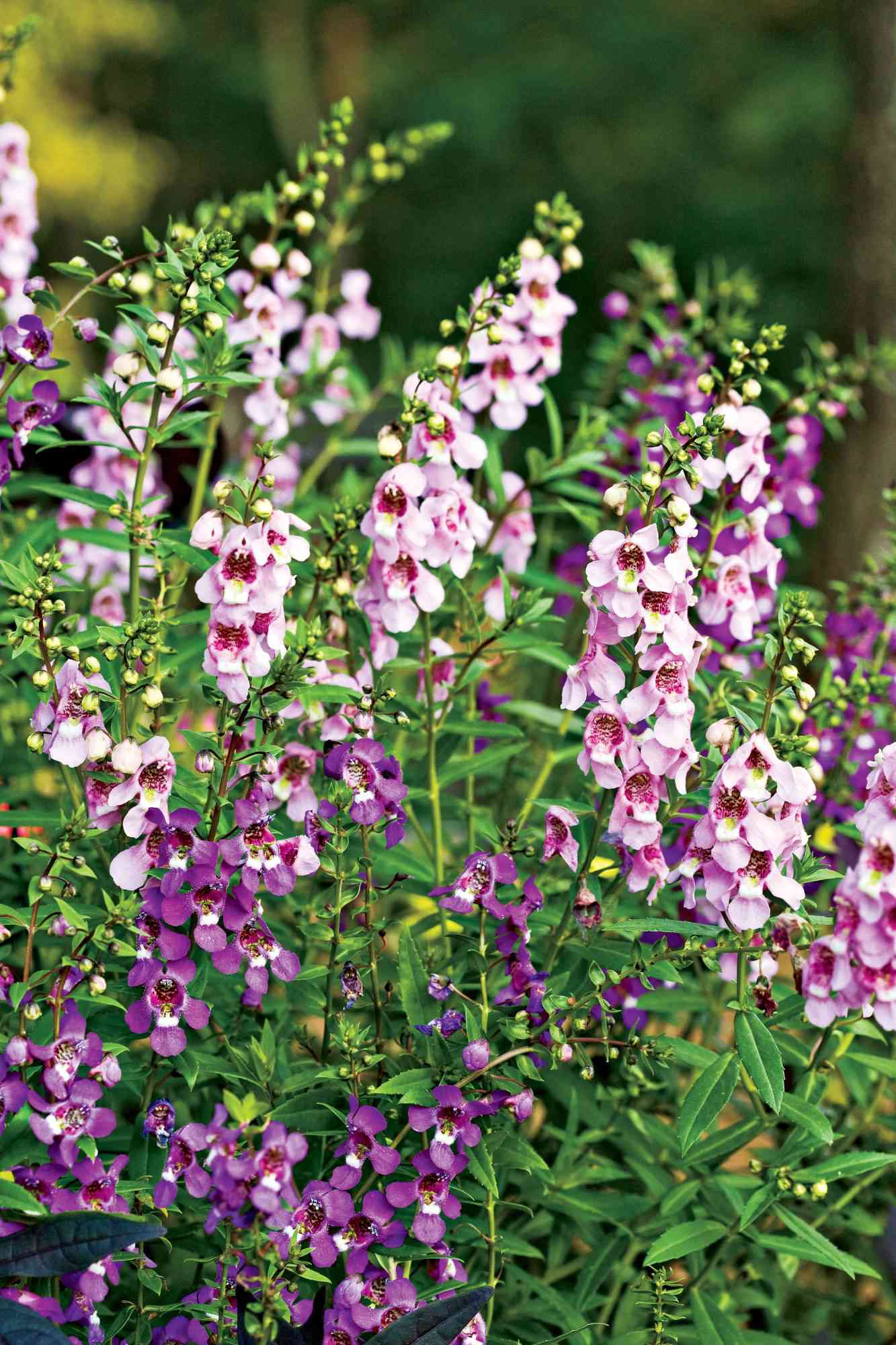
- Botanical Name: Angelonia angustifolia
- Sun Exposure: Full Sun
- Soil Type: Well-draining, Rich
- Soil pH: Acidic (5.5 to 6.2)
Angelonia is sometimes called «summer snapdragon» for the snapdragon-like look of its flower spikes, but the similarity ends there. It loves heat. Combine that with well-drained soil, and you’ll get nonstop blossoms of blue, purple, pink, red, or white from spring until fall. Plants range from six to 24 inches tall. Upright forms work well in borders. Use trailing types in hanging baskets and window boxes.
Poppies
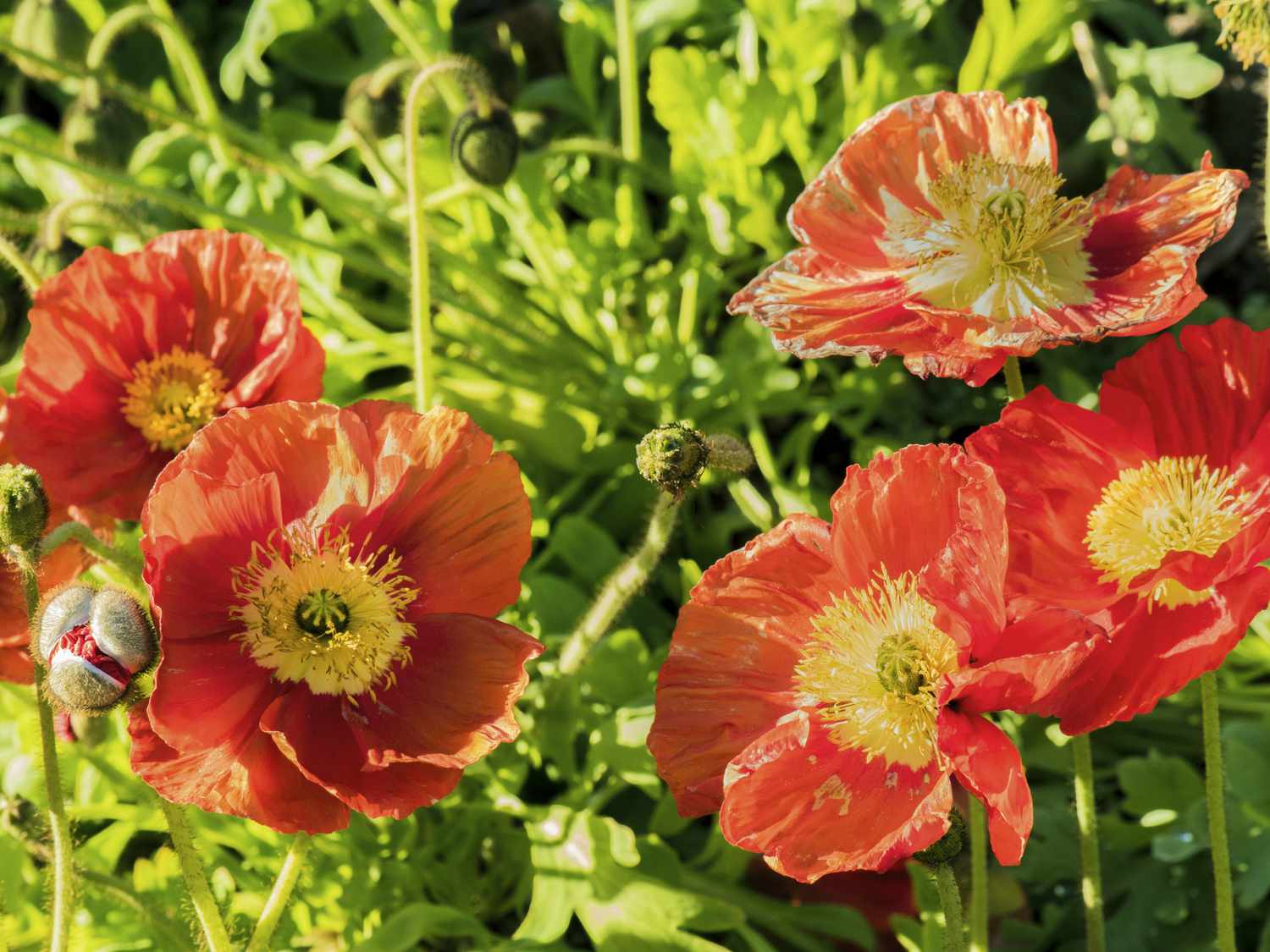
- Botanical Name: Papaver somniferum
- Sun Exposure: Full Sun
- Soil Type: Well-draining, Rich, Loamy
- Soil pH: Neutral (6.5 to 7.0)
This group of annuals and short-lived perennials provides a rainbow of bright colors in spring and summer. Like snapdragons, they perform better before the summer burn sets in. They also make good cut flowers, but sear the ends of the cut stems with a flame to make them last longer when placed in water. Poppies for sale nowadays come in pots. If you wait until fall, you can sprinkle poppy seeds on the soil surface, let the rain water them, and enjoy a raft of seedlings in spring.
Love-in-a-Mist
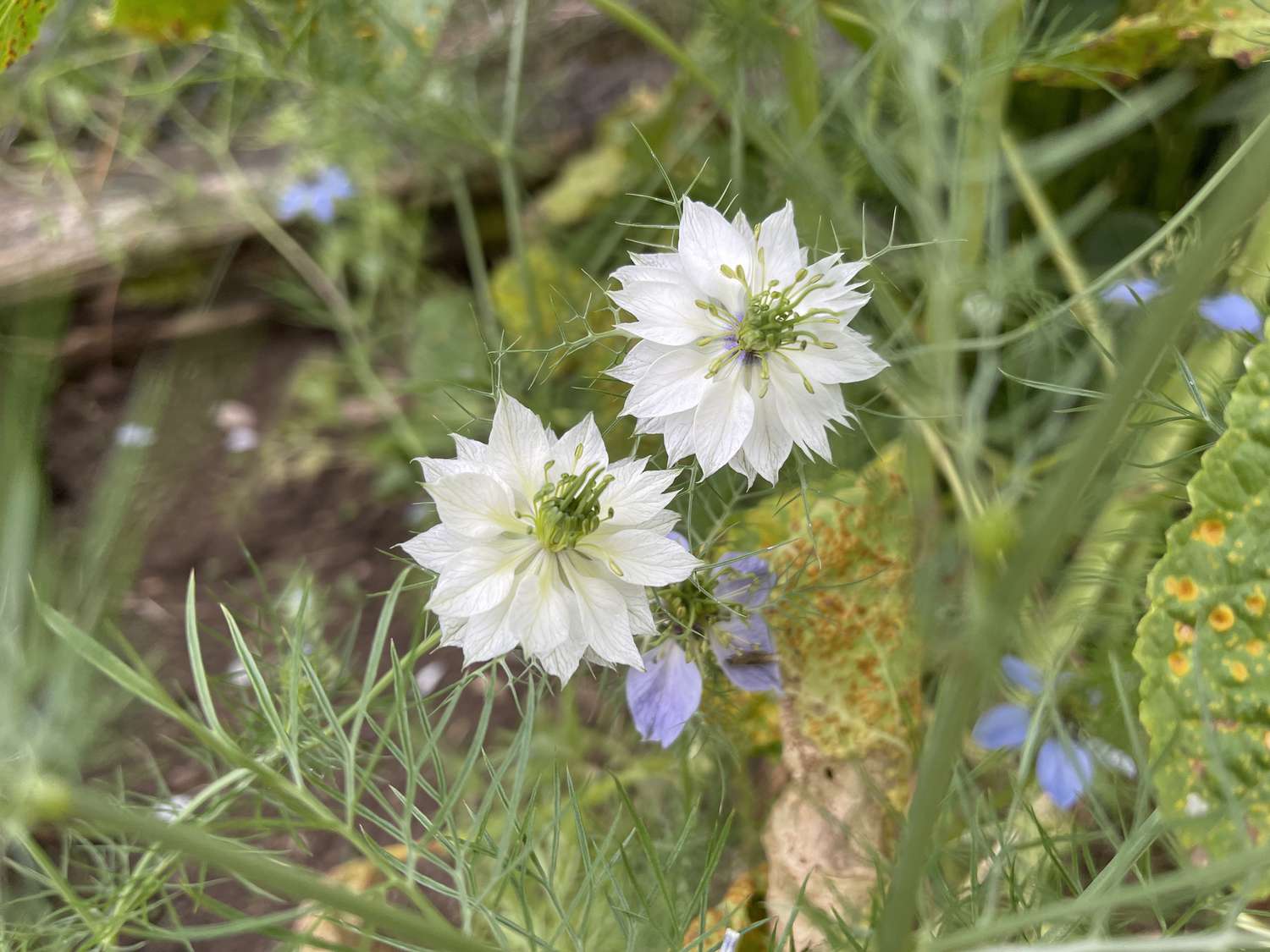
- Botanical Name: Nigella damascena
- Sun Exposure: Full Sun
- Soil Type: Well-draining, Fertile
- Soil pH: Acidic to Neutral (6.0 to 7.0)
Prized for its lovely blue, pink, or white flowers and ornamental seed pods used in arrangements, this old-fashioned annual blooms in a «mist» of threadlike foliage. Plants grow 12 to 18 inches tall. Sow seeds directly into the garden in early spring and again in fall. Love-in-a-mist dies in the summer swelter but will sprout the following spring if you let the seed pods drop seeds on their own or save them and sow in fall.
Globe Amaranth

- Botanical Name: Gomphrena globosa
- Sun Exposure: Full Sun
- Soil Type: Well-draining, Sandy
- Soil pH: Acidic (6.1 to 6.5)
Like angelonia, this tidy annual blooms nonstop from spring to fall. Rounded, cloverlike flower heads top plants from six to 24 inches tall. Available colors include purple, red, orange, pink, and white. Established plants need little water, and pests seldom bother them. Cut flowers are easy to dry and use in arrangements.
Lantana
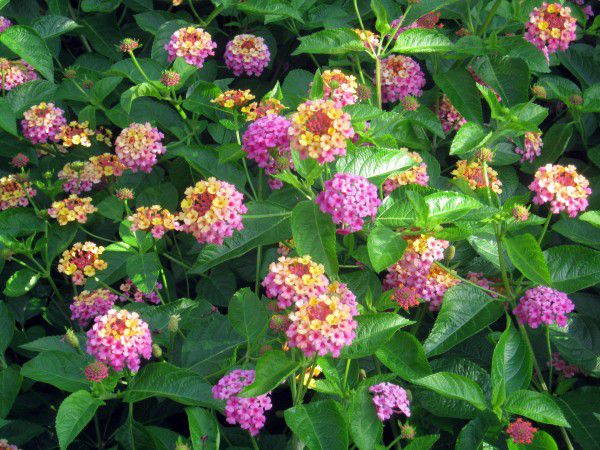
- Botanical Name: Lantana camara
- Sun Exposure: Full Sun
- Soil Type: Well-draining, Sandy
- Soil pH: Acidic (6.0 to 6.5)
Lantana is something you’d want to plant, deer or no deer. It takes heat and drought, has no serious pests, and bears showy, flattened flower clusters in red, orange, yellow, pink, salmon, white, or lavender colors. Hummingbirds, butterflies, and other pollinators love it, but deer can’t stand it. Height and spread vary by selection, but two feet tall and three feet wide are common.
Sweet Alyssum
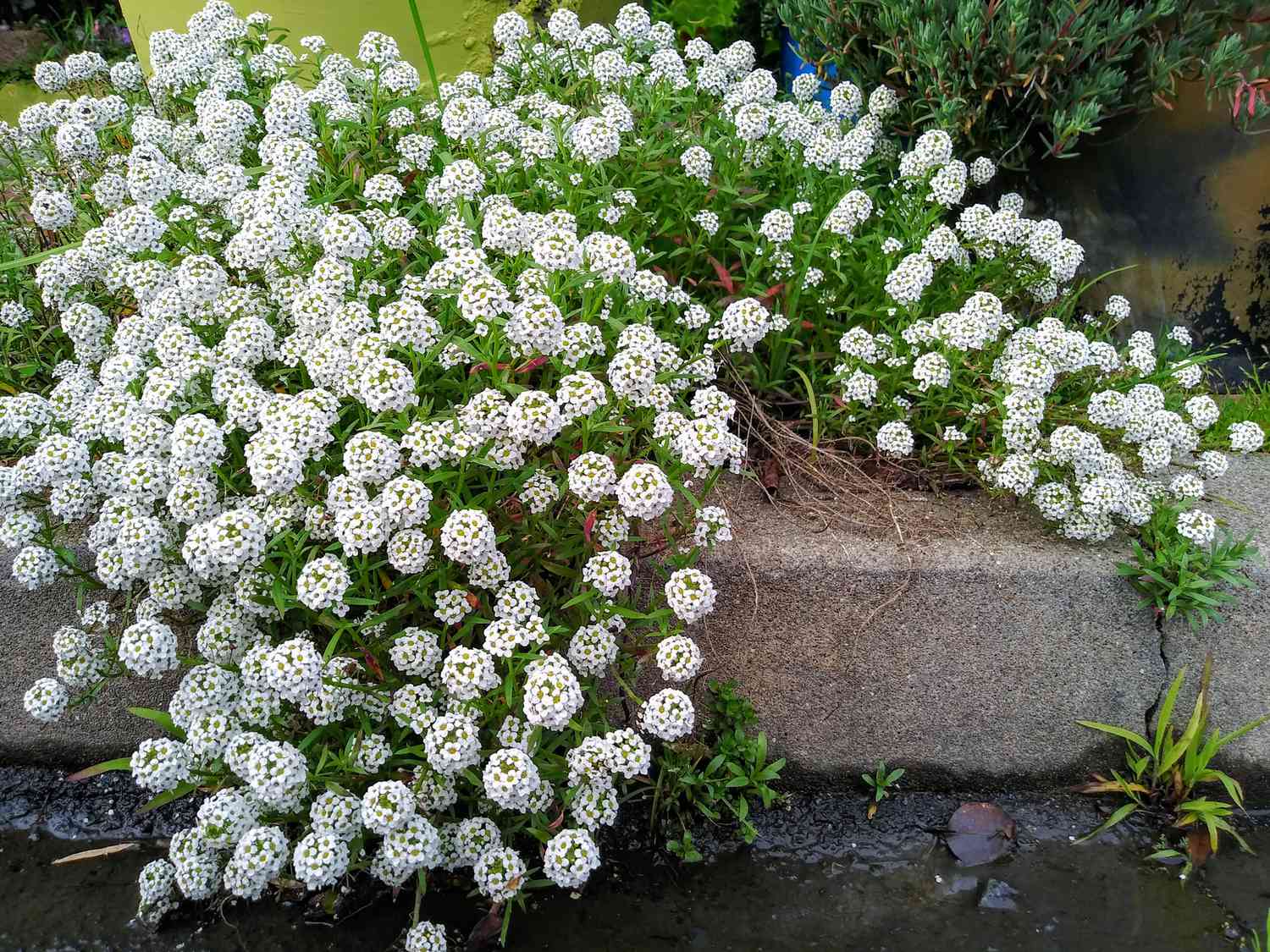
- Botanical Name: Lobularia maritima
- Sun Exposure: Full Sun
- Soil Type: Well-draining, Moist
- Soil pH: Acidic to Neutral (6.0 to 7.0)
Few annuals do as good a job edging the front of a border as Sweet Alyssum. This trailing plant grows six to 12 inches tall and features honey-scented white, pink, or purple blooms. It flowers from spring to fall, although flowers are sparser during the dog days of summer. Shear it back by half at this time to encourage new growth and flowers. White «Snow Princess» keeps blooming even through hot summers.
Floss Flower
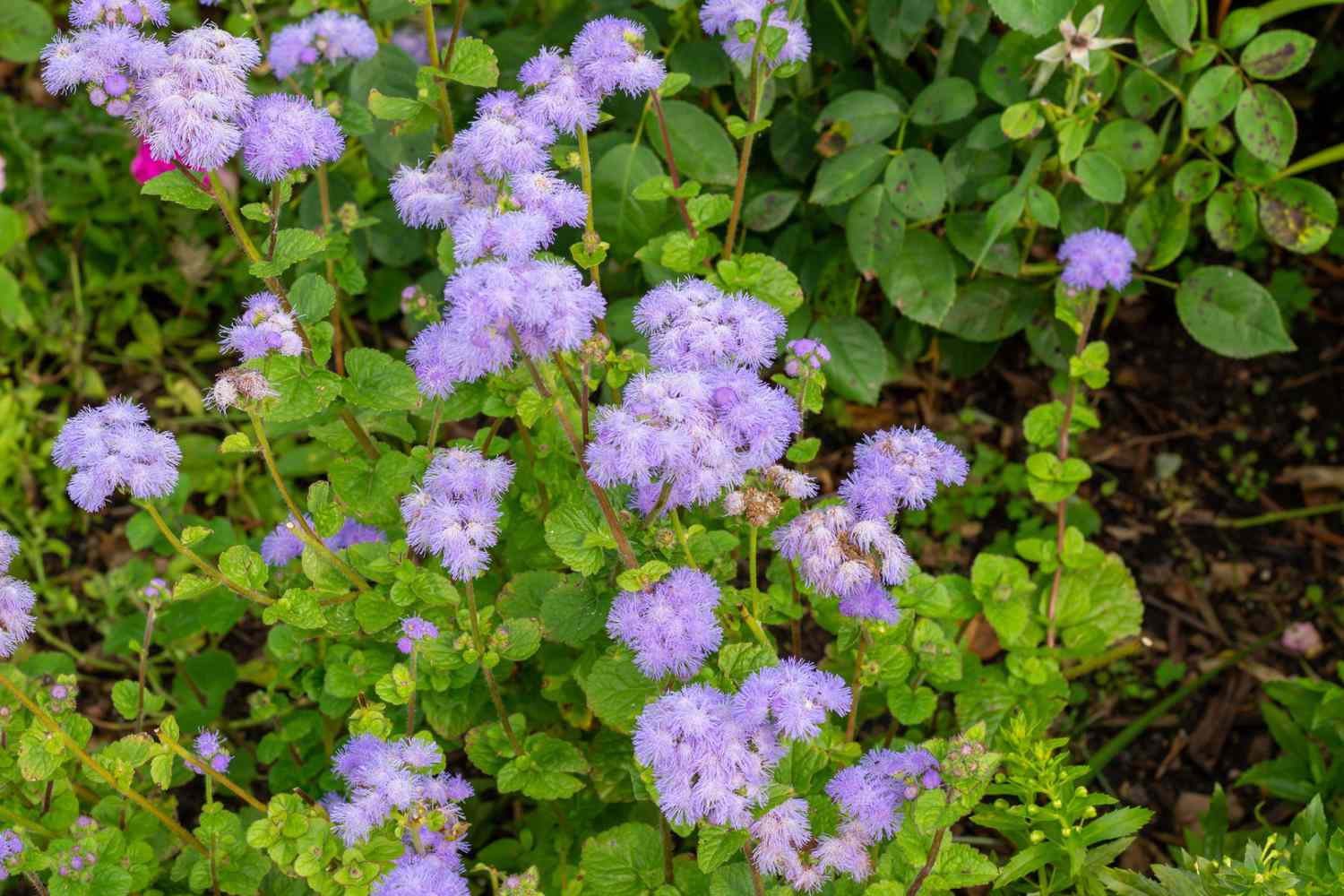
- Botanical Name: Ageratum houstonianum
- Sun Exposure: Full Sun
- Soil Type: Well-draining, Moist, Fertile
- Soil pH: Acidic to Neutral (6.0 to 7.5)
This old-timey annual is one of your best sources of true blue in the garden. It also comes in pink, purple, and white. Plants form compact mounds six to 12 inches tall and wide, covered with fuzzy blooms resembling powder puffs. Floss flower is suitable for cutting, attracting butterflies, edging the front of a bed, or growing in containers. It prefers moist, well-drained, fertile soil.
Spider Flower

- Botanical Name: Cleome hassleriana
- Sun Exposure: Full Sun
- Soil Type: Well-draining, Moist, Loamy
- Soil pH: Acidic to Neutral (6.0 to 7.0)
Also called grandfather’s whiskers, the spider flower gets its name from long stamens protruding from its open flowers. Flowers may be pink, rose, white, or purple. Some selections remain a single color, while others open purple, rose, or pink and fade to white the next day, giving you two colors on one plant. These fast, upright growers can grow five feet tall, a good size for the back of the border. If that’s too tall, try lavender-pink «Senorita Rosalita» that tops around 18 inches.
Salvia
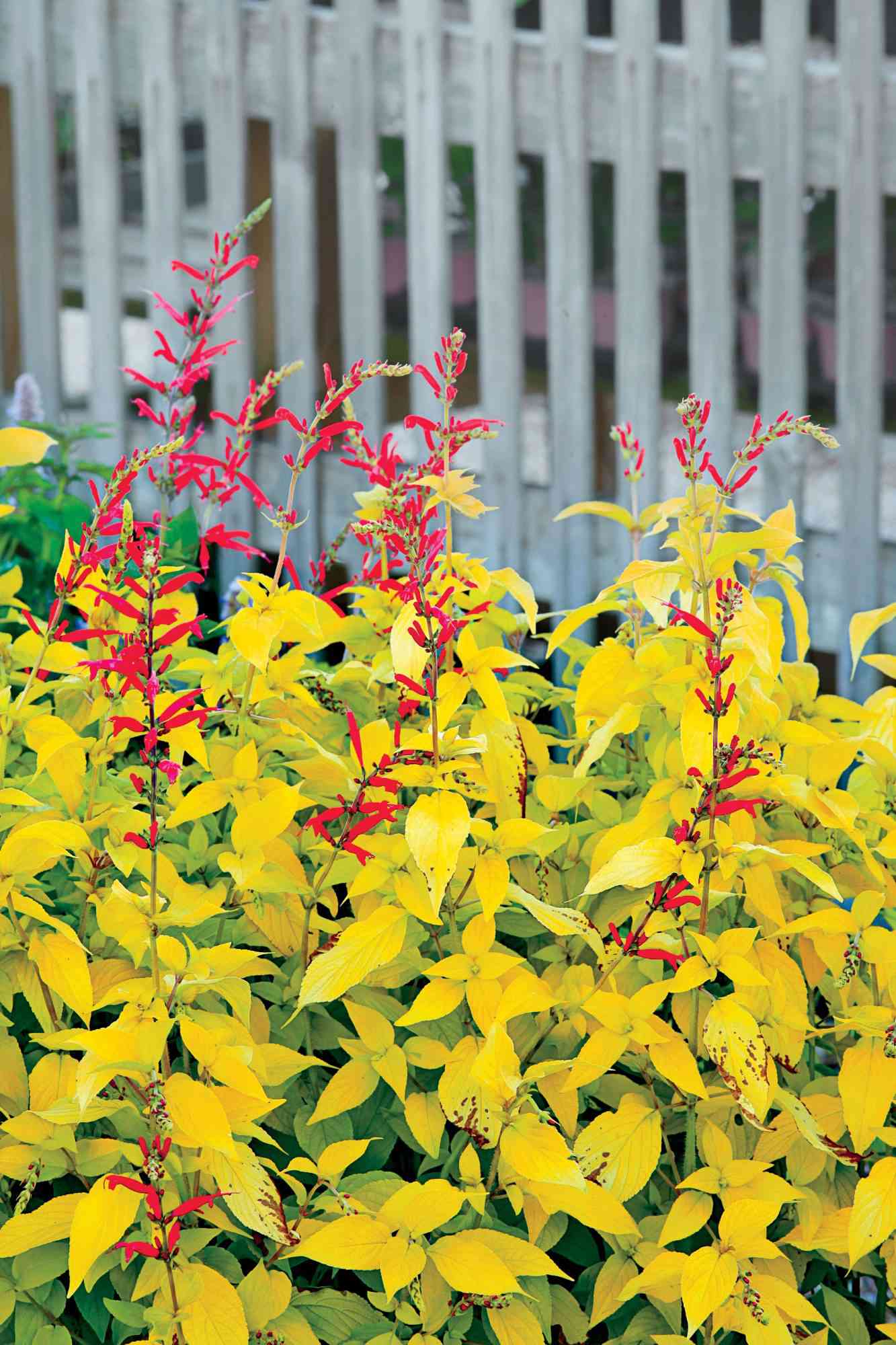
- Botanical Name: Salvia sp.
- Sun Exposure: Full Sun
- Soil Type: Well-draining, Moist, Loamy, Sandy
- Soil pH: Acidic (5.5 to 6.5)
Salvia is a tremendously large group of plants comprising annuals and perennials. Although few wait to bloom until late summer or fall, most flower continuously in warm weather from late spring until frost in almost every color available. Butterflies and hummingbirds love them. Give these plants heat, sun, and well-drained soil. Remove spent flowers to encourage the production of new ones.
Coneflower
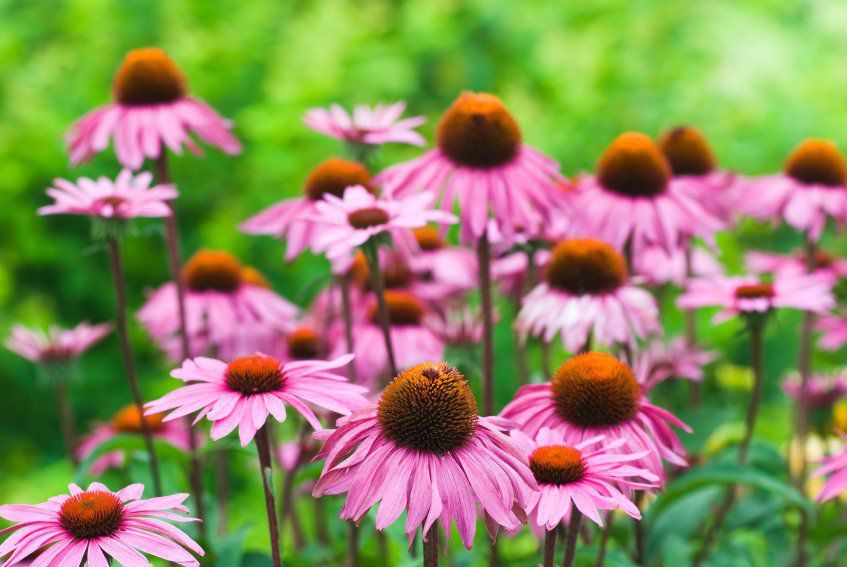
- Botanical Name: Echinacea
- Sun Exposure: Full Sun
- Soil Type: Well-draining
- Soil pH: Neutral (6.5 to 7.0)
Coneflowers attract pollinators, such as birds, bees, and butterflies, but are relatively deer-resistant. The cone-shaped flowers that resemble a daisy bloom in the summer in purple, pink, red, yellow, orange, and white varieties. Coneflowers are long-blooming perennials, excellent for gardens and growing along borders. Deadhead spent blooms to encourage a second flower showing.
Verbena
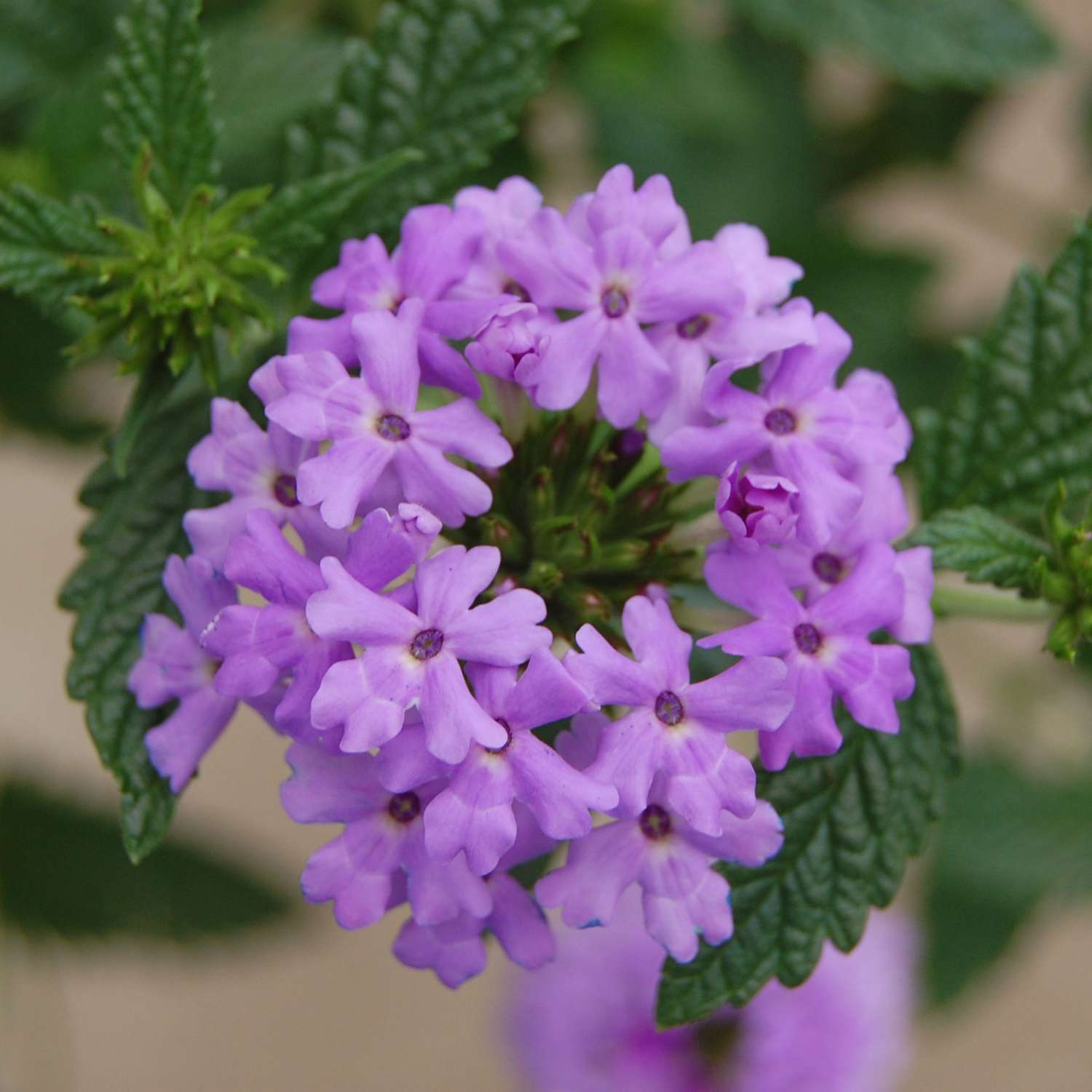
- Botanical Name: Verbena
- Sun Exposure: Full Sun
- Soil Type: Well-draining, Varies
- Soil pH: Neutral (5.8 to 7.2)
Blooming in small flower clusters, verbena, or vervain, are available in white, pink, blue, purple, yellow, red, and bicolor varieties. These flowers bloom from spring until fall in a vertical direction, reaching one to six feet tall and up to three feet wide. Deadhead spent flowers for new blooms throughout the growing season.
Catmint
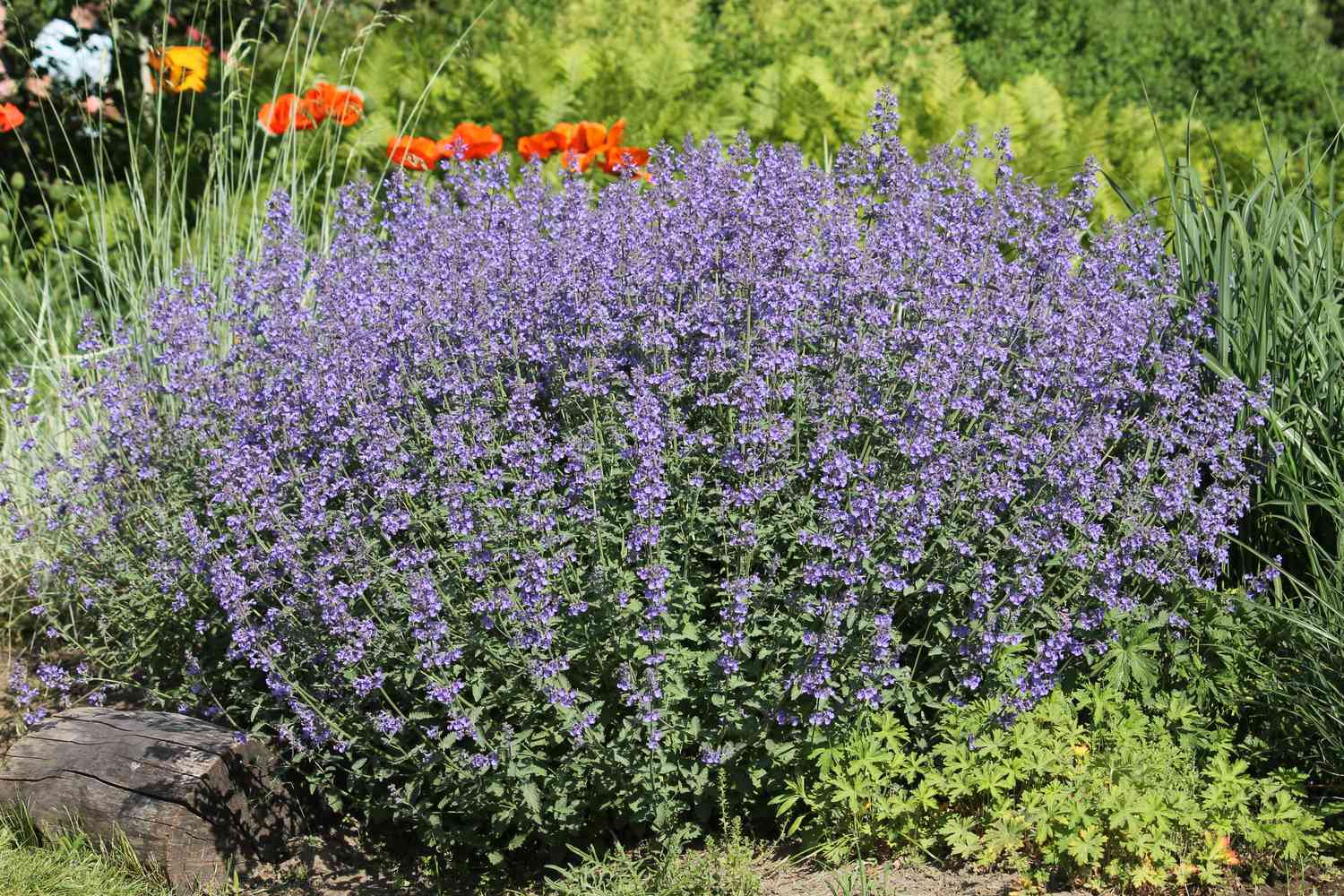
- Botanical Name: Nepeta cataria
- Sun Exposure: Full Sun
- Soil Type: Well-draining, Varies
- Soil pH: Varies (5.0 to 8.0)
Catmint is excellent for deterring deer as the aromatic and irregular foliage blooms without much maintenance. Available in blue, pink, purple, yellow, and white flowers, catmint is a member of the mint family or Lamiaceae. Pests rarely infect Catmint.
Cosmos
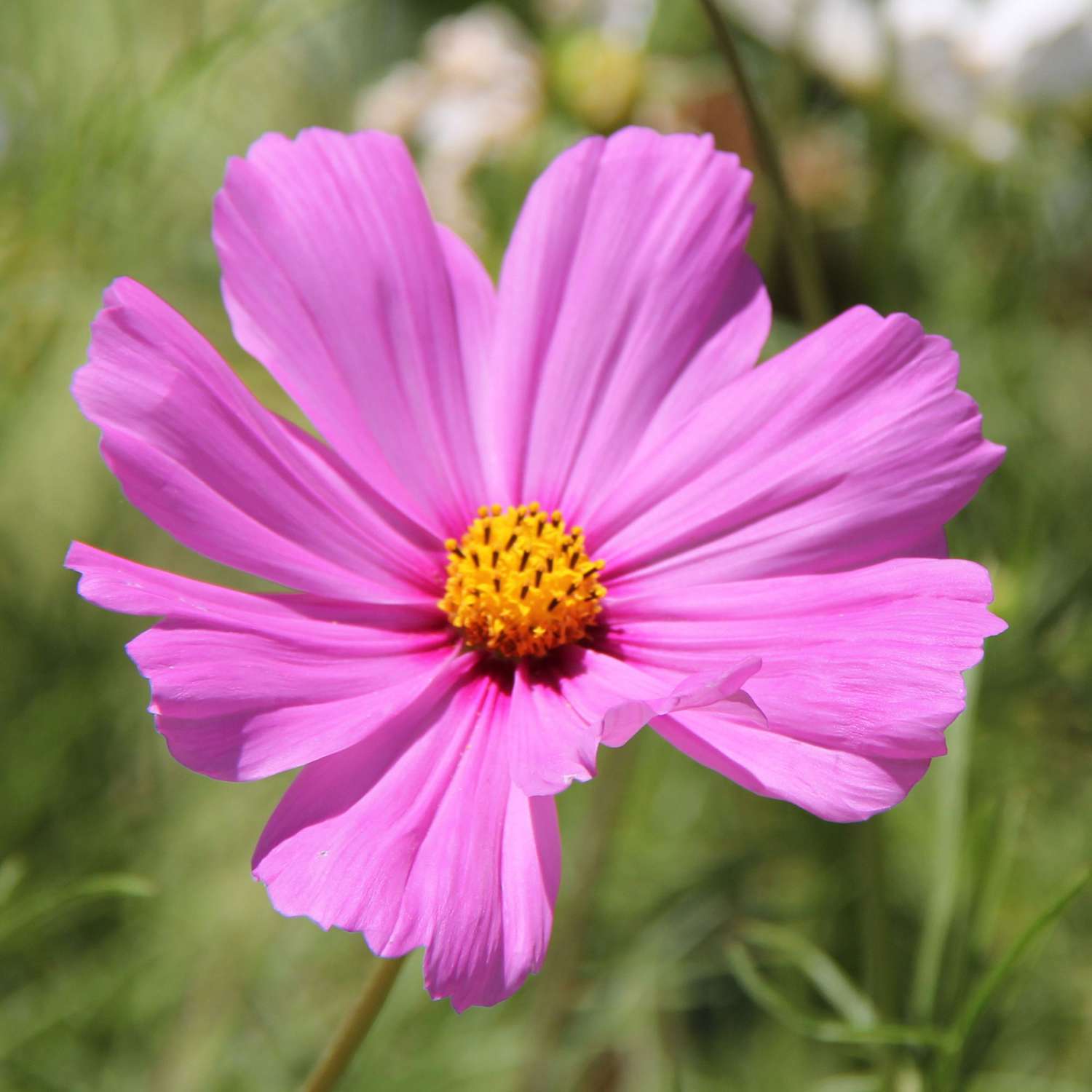
- Botanical Name: Cosmos bipinnatus
- Sun Exposure: Full Sun
- Soil Type: Well-draining
- Soil pH: Neutral to Alkaline (7.0 to 7.5)
Cosmos are available in a wide range of colors. These flowers have daisy-like blooms with three-to-five-inch cup-shaped petals that sway in the wind on top of their slender stems. Cosmos are adaptable to many soil conditions and attract pollinators, including birds, bees, and butterflies. Grow these flowers in garden beds or as a border plant.
Red Hot Poker

- Botanical Name: Kniphofia uvaria
- Sun Exposure: Full Sun
- Soil Type: Well-draining, Moist
- Soil pH: Neutral (6.5 to 8.0)
Red hot poker blooms on a sturdy stem in mid-to-late summer, reaching two to three feet tall. These flowers attract butterflies, hummingbirds, and bees, but deer and rabbits ignore them. This perennial features bright-colored, spiky blooms and lance-shaped foliage.
Was this page helpful?
Thanks for your feedback!
Tell us why!